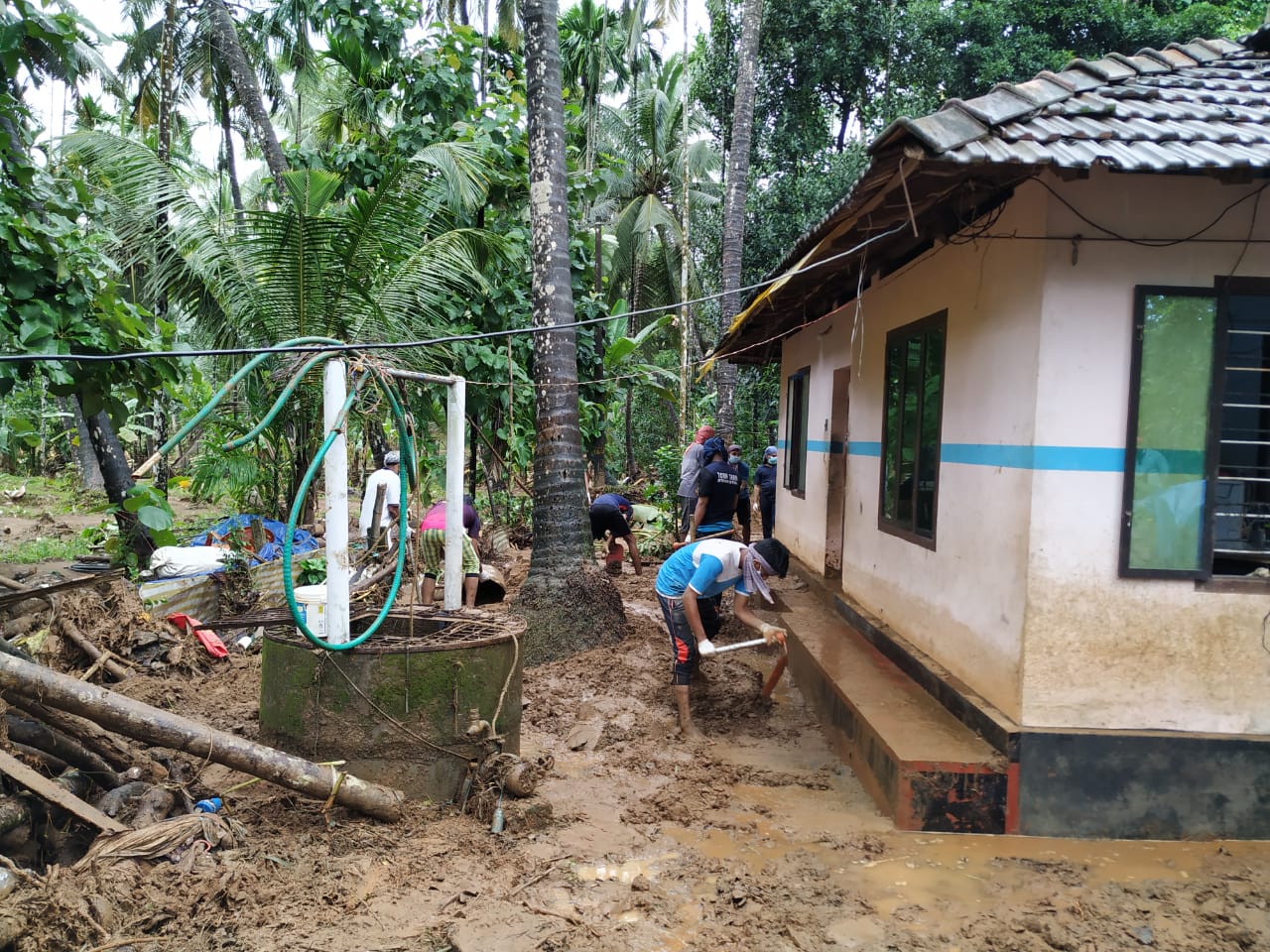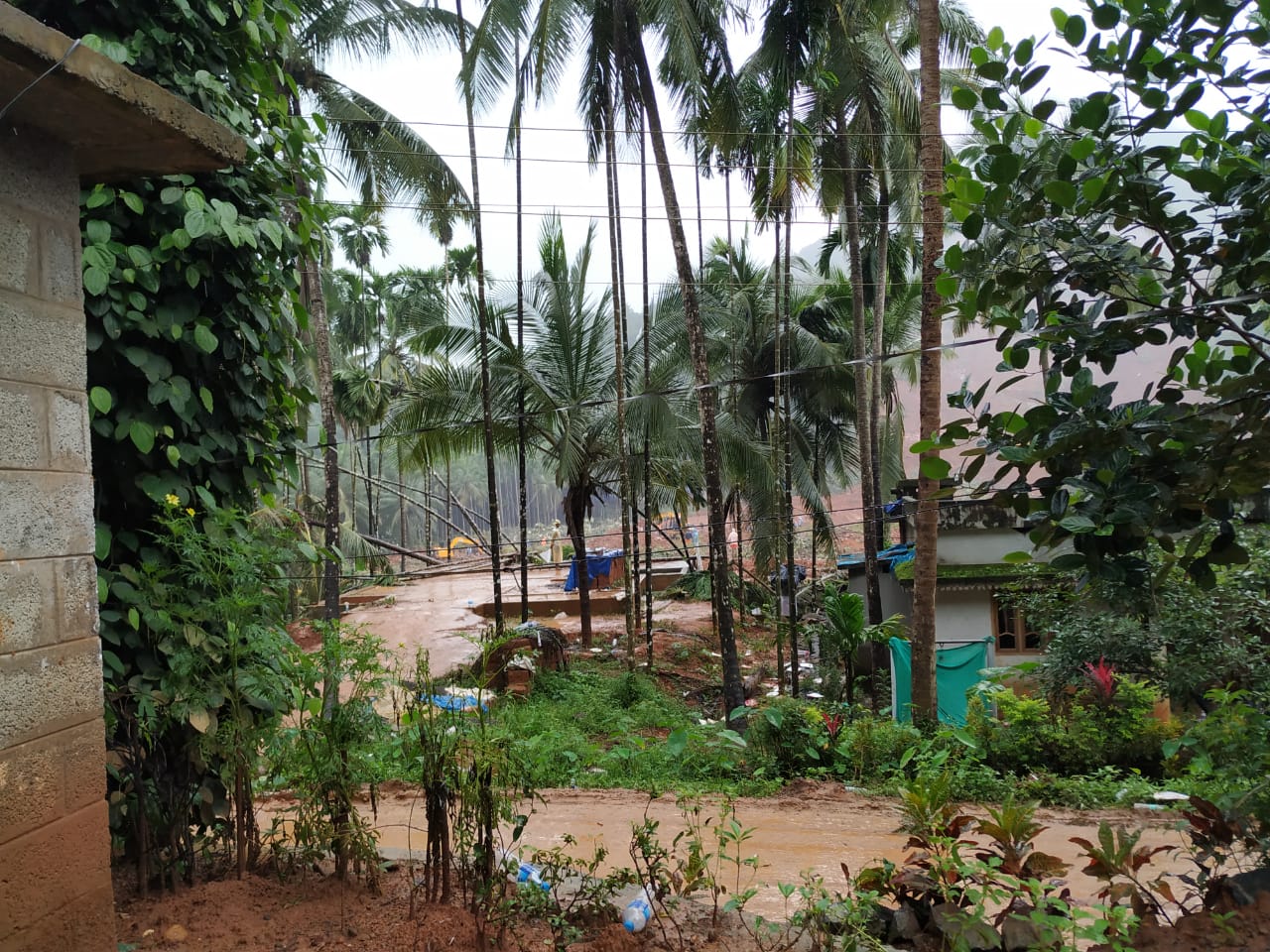
Faceless heroes of Kavalappara brave warnings, floods to restore normalcy
It is yet another day for Ibnu. Going to the site of the landslide at Kavalappara and helping rescue workers scoop out decomposed bodies of the people he once knew, one after another, and ferrying them to the village’s burial site after post mortem.

It is yet another day for Ibnu. Going to the site of the landslide at Kavalappara and helping rescue workers scoop out decomposed bodies of the people he once knew, one after another, and ferrying them to the village’s burial site after post mortem.
Since, August 8, when a massive landslide wiped out an entire colony of houses at Kavalappara village in Nilambur block of Kerala’s Mallapuram district, Ibnu and other volunteers from Kavalappara and nearby villages have been working tirelessly with paramilitary forces and NGOs to retrieve and identify bodies and ferry them to the hospital or burial sites. Ibnu alone has transported 26 bodies from the site so far.

For him, what drew him to the landslide site earlier was the hope to find an acquaintance alive. Now, it is just a ritual to recover the missing bodies and help them get a proper funeral.
“The first couple of days, we at least had some hopes of getting anyone alive. The bodies that we recovered were also recognisable. Now you can’t even look at them. They are completely damaged. Now, we are identifying people from their clothes and jewellery. It is not a pleasant sight to look at,” says 40-year-old Ibnu.
The noxious sight of headless corpses, the fact that his own house was inundated in the deluge and that there isn’t enough food for his family in the disaster-struck area, doesn’t deter Ibnu, a resident of Pothukal village, from getting up in the morning and spending the whole day in rescue and rehabilitation work.

Ibnu isn’t alone in the exercise. From local volunteers, NGOs, police to military, fire services, NDRF and citizen volunteers from other districts, hundreds of people have joined hands in working in rescue and rehabilitation at Kavalappara, without sleep and rest.
Ibnu lost at least three friends, all local volunteers, who had gone to the Kavalappara colony to alert the residents and had got caught in the landslide. Ibnu was one of the local volunteers who have been working at the site from Day One, much before the rescue forces could navigate through the flood-hit zone.
One mile ahead of the landslide site in Kavalappara, the road has been cordoned off by police, allowing only relief or hearse vans to pass. It is a walk to the rest of the way. Houses on the either side of the road to the site are deserted by their occupants, most of them having left for relief camps or relatives’ houses.
The road is slushy, the loose soil on certain stretches give way when stepped on and the spells of rains are unpredictable – ranging from a light drizzle to a downpour further making the walk difficult. When it rains, the road fills up quickly, turning it into a slushy place and the earth along the elevated side of the road looks threatening in a landslide-prone area. In such a situation, the only way for a stranded walker is to run to the shade of the deserted houses on the other side, marooned in slush, mud and rainwater.
But the NDRF officer who runs through this slush and mud, doesn’t have any complaints. We, covered in raincoats and umbrellas, meet a couple of them on the road while they were “making a quick run to the nearest primary health centre” amid a heavy downpour, to get medicines for injured rescue workers. The nearest PHC is at least a mile away.

They have been tirelessly running errands, supervising exhumation at the landslide site, administering first aid to rescue workers and helping in rehabilitation work since the past few days.
“Rain or not, we have to shuttle between the rescue site and other places several times a day. We have been trained to do these jobs. Look at those workers in the landslide area, who are labouring in the rain, trying to retrieve bodies. It’s not easy for them. Most of them get injured and the wound festers into gangrene. We have to immediately apply betadine on it or it grows worse. There is a medical team on the standby for them,” says one of the NDRF officers, a CISF cadre from Bihar, who doesn’t wish to be identified.
Even though the erratic spells of rain seem to be a bother for rescue workers at the site, the officer says it is actually a boon in disguise. “The rain is a relief. Otherwise, the stench of decomposed bodies and vegetation was so overpowering that one could get it from two kilometres away. Imagine the plight of those digging out the bodies,” he adds.
For officers of the Kerala Fire Services department, getting into Kavalappara on the day of the landslide and floods was a herculean task. “The locals had informed the Nilambur fire services department at around 8 PM, but when we reached the place, it was difficult getting into the village. The bridge to Kavalappara was overflowing with floodwater, there were tangled wires and twisted electric poles on the road and the wind was blowing at a high speed. I was with two other officers and the driver could barely keep the wheels steady,” says a station officer from Thrissur, recounting the morning of the day after the mishap.
The officer is one of the seven from the fire services department who have been deployed at the site to supervise the exhumation of bodies.
Also read: Razed by a landslide, Kavalappara is a picture of death and despair
“Currently, the excavation is going on at six points and more than 100 people including leading firemen, firemen, drivers, mechanics among others have been deployed. There are at least three JCBs and seven Hitachi excavators working on the site and 20 vehicles, 80 emergency reserve tenders apart from Quick Response vehicles have been deployed. Seven bodies have been recovered today, taking the death toll to 30 (as of August 14) and 29 are still missing.”
Four more bodies have been recovered on Thursday, increasing the death toll to 34, and 25 bodies are yet to be recovered.
Another fire officer says the most pressing problems for them was the lack of communication, food and shelter during the first few days. “Also the force should have a reserved battalion to cater to such situations. The floods happened everywhere else in Kerala. But, when calamities like these happen and fire personnel are sent to disaster area, there is a shortage of staff at home, to handle similar situations,” he says.
Just across the landslide site are camped a battalion of police, who have been collecting latest updates of the excavation and helping rescue workers, volunteers and the press with their work. For the past few days, many of them have been on duty at an elevated platform that is being used by the media to shoot the excavation work, hollering when someone crosses the forbidden wire (leading up to the pit of the landslide area) and at times pulling photographers and journalist off the edge.
Also read: Kavalappara counts its dead as rescuers move silt to find the missing
“If it rains, there are chances that more landslides will happen. We have to be careful to avoid any more casualties,” says a police officer, while offering to share his quick lunch of relief food consisting of coarse rice, with a dash of sambhar and thoran (side dish) thrown together.
A unique sight, rarely seen anywhere else, is groups of volunteers, from other villages and districts, loaded in trucks and mini vans getting down at the village, to clean the abandoned houses and clear the area of water and debris.
Twenty-five-year old Suresh, who has come with his group of 20 friends from the nearby Chungatara, is busy levelling the ground outside a flood-ravaged house. “Isn’t it better to do something than sit and mope in our homes? We are not doing it for money. It is the least we could do for our people who have lost life and property in the floods. Many of the flood victims are in the relief camps. It must have taken years of savings for them to build these houses. Imagine them sitting in relief camps and thinking about the damaged house they will come back to. We hope our efforts will minimise their agonies to some extent,” he says.


